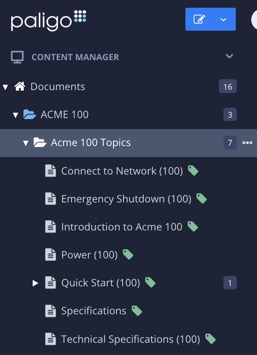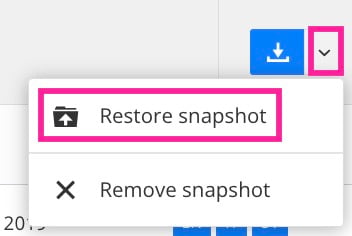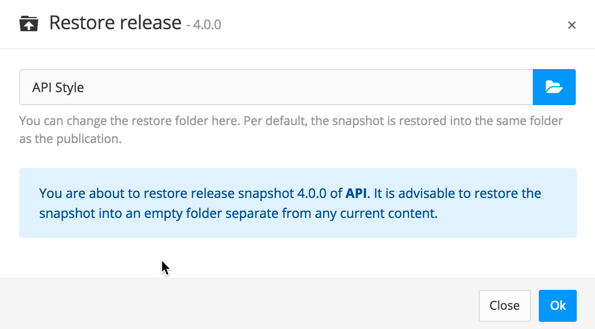Restore a Previous Version
Snapshots are useful when you need to restore an old version of a publication or a topic. The snapshot is a ZIP file consisting of several XML files (the topic, translations, variables) and images.
When a snapshot is restored, that file is imported back into Paligo and treated like new content, which results in topics and fragments getting new IDs.
The restored version is independent in regards to the original content. Because the restored release may have had completely different variables and the like, such resources will be separate and possibly partially duplicated. You may therefore want to clean such resources up after republishing your old version.
There is no limit to how many snapshots Paligo stores. Restoring an old snapshot does not affect other archived versions and does not remove earlier versions.
However, snapshots (whether restored or not) use up your storage space. If you know that you do not need old versions, you should remove them.
Important
Restoring snapshots is not something recommended on a regular basis, but only for exceptions when you need to republish an old version.
If you need to keep multiple release versions in parallel in your system, with reuse between them, you should instead look into doing so with the help of Reuse Forks and Filtering / Profiling, possibly combined with Branching.
Select the
foldercontaining the content in Content Manager.
If the content is not in a folder, select the top-level folder Documents.


This will open the Resource View.
Select the blue arrow to the left of the topic or publication.

Select the Snapshots tab.

Select the arrow to the right of the download button and choose Restore snapshot.

Select in which folder to restore the released version.

Select OK.
If necessary, make changes. Changes made to the topics in a restored release do not affect any of the topics in your current version in Paligo. It is a completely separate copy.
Republish to any format you like.